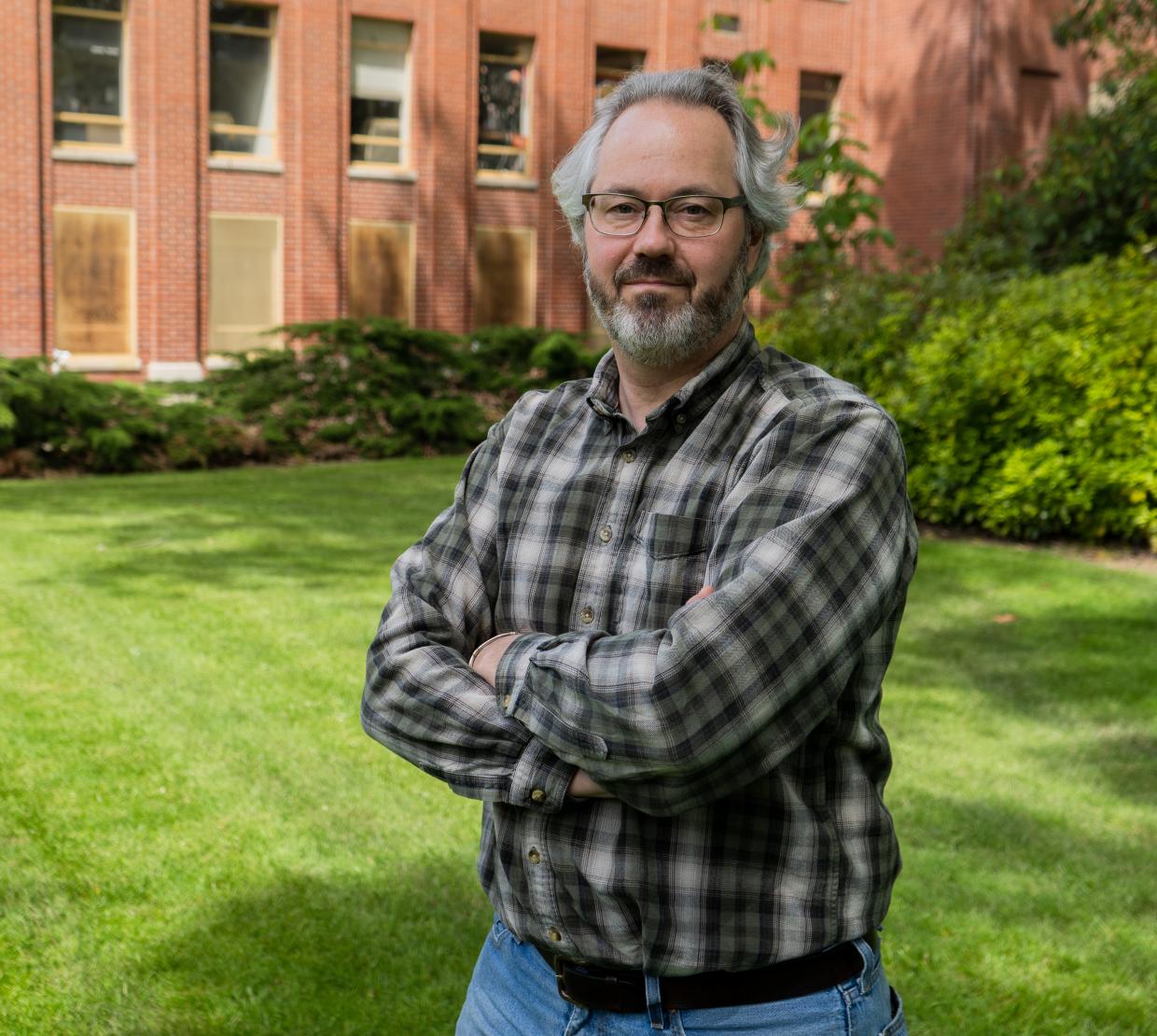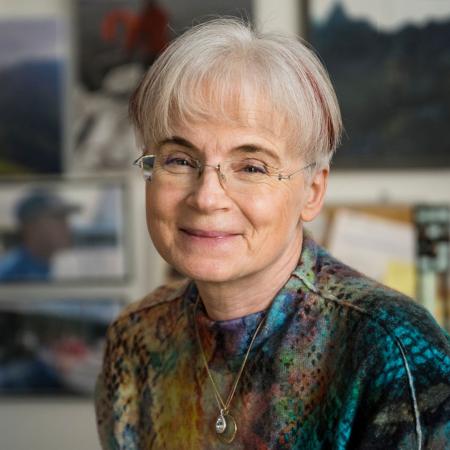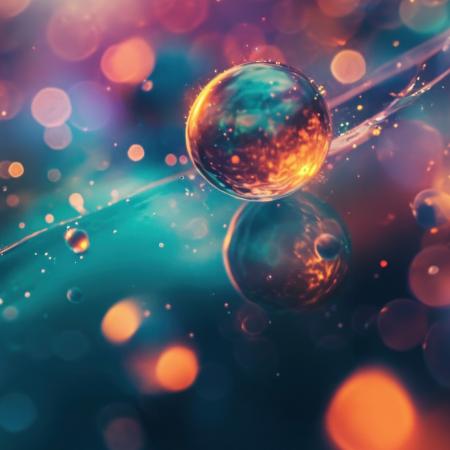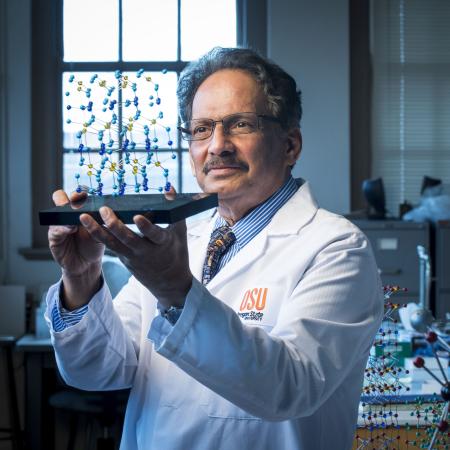One might call it the Indiana Jones Syndrome.
Henry Jones Jr. may have been a brilliant archaeologist, but confronted by a corridor of confused undergraduates, he fled out his office window.
Being a genius in a particular field doesn't necessarily give professors the skills to effectively pass along their knowledge to students. Indiana Jones, of course, is a fictional cinematic hero.
David A. Craig, the associate department head of the Department of Physics at Oregon State University, nonetheless noticed a similar dilemma confronts physics professors in the real world. They study to become scientists, to conduct research and understand the mysteries of the universe.
Understanding the mysteries of college freshmen, however, is an entirely different science.
"Fundamentally, a Ph.D. is a certification that you're ready to do independent research," said Craig, a faculty member at Oregon State for the past six years. "It's a research-focused credential. Many (but certainly not all) students make some money as graduate students by doing some teaching, but it's only relatively recently that those students have received any training at all in pedagogy, in the theory of teaching and learning and how to be an effective teacher in the classroom."
Craig and other leaders of the American Physical Society, the predominant professional society for physicists in the United States, decided to help teach the teachers. As a member of the society's education committee, Craig was one of the driving forces behind the creation of the Departmental Action Leadership Institute and is currently its co-leader.
Among other things, the Institute helps faculty members acquire the teaching skills that may have eluded them while they were grappling with the finer points of quantum cosmology.
"If you want to achieve effective, sustainable change that will persist over time and be embraced by the entire community, you need to have that change informed by a lot of different voices."
"All of that experience up until that point has been principally focused on research," Craig said. "And what's the first thing that happens? They're plopped into a classroom and told 'Go forth, teach, be wonderful' with little to no training or support."
The good news is that learning how to teach isn't like splitting the atom. "Most academics are smart people," he said. "They can learn if they're receptive and have the proper training, but they're typically just chucked in without that training."
University physics departments sign up for the Institute and create a "departmental action team" — groups of five people assigned to lead changes in their department. Two members of each team are designated "change leaders" who participate directly in Institute activities and lead their action teams.
Each Institute session includes representatives from three to five participating departments who commit to working with two facilitators for a minimum of a year. The curriculum trains the leaders to better understand the situations they face and takes steps for sustainable change.
Following an initial in-person workshop, the Institute consists of approximately 30 hours of video conferences throughout the academic year. So far, five sessions have been held. A sixth is pending funding from the National Science Foundation.
Craig said the Institute does more than help individual faculty members improve their teaching skills. It also helps faculty members handle the demands of leadership. Many academic departments at the universities rotate department head responsibilities among their faculty. Leading a department can be like teaching a class.
It requires skills people may not have developed.
"You're put into a leadership position — often managing budgets, thinking about people, hiring adjuncts," Craig said. "Once again, you're just expected to figure it out. There's no training, no experience. How do you run an effective meeting? How do you deal with free speech issues in your department? How do you deal with mental health issues?"
The Institute covers such basic issues as how to run a meeting. However, Craig said, running meetings is more important and complicated than some people think. "If you want to achieve effective, sustainable change that will persist over time and be embraced by the entire community, you need to have that change informed by a lot of different voices," he said.
That requires effective meetings.
"What we do is train groups of leaders in physics programs to solve those problems themselves in a meaningful and sustainable way."
"How do you have a conversation where everyone contributes instead of the loudest, most vocal, the strongest personality dominating the conversation?" Craig added. "You spend any time in faculty meetings, that happens all the time."
However, he said, the Institute is not there to identify specific problems and prescribe specific solutions. "It's called a leadership institute for a reason," said Craig.
Individual problems depend on the individual context, he added. "Departments have to figure out those things for themselves. What we do is train groups of leaders in physics programs to solve those problems themselves in a meaningful and sustainable way."
Participants take the lead in what issues they feel need to be addressed in their departments. Occasionally, Craig said, they must be reminded that the scientific method applies beyond the confines of physics. "It's funny we have to say this to scientists, but they don't always transfer what they know from science to leadership," he said.
"People often land on what they think the solutions are without really properly understanding the problems they actually have and making their decisions based on actual data and concrete information," he added.
On the other hand, Craig said, physicists have traditionally been pioneers in education. Using scientific methods, they developed discipline-based education and studied how students learn, how to engage with students, and how to support their learning process.
Much of what they have learned has been set down by the American Physical Society in an online resource called the Effective Practices for Physics Programs (or EP3) Guide. The Guide provides basic information and advice for physics departments on best practices and serves as foundation for the Leadership Institute.
It was created by a task force including members of the American Physical Society and American Association of Physics Teachers. Craig co-chaired the task force. Members included Carl Edwin Wieman. The Corvallis native won the Nobel Prize for his work in condensed matter physics in 2001.
Wieman is also the founder and chairman of PhET Interactive Simulations, a web-based directive of University of Colorado Boulder which provides simulations to improve the way that physics, chemistry, biology, earth science and math are taught and learned.
"The Guide lives on the web," Craig said. "It was designed to be something that isn't static. It will be continually reviewed and kept up to date. As new research comes out, it's updated with the new research. It's maintained as a living force in the community by the American Physical Society."
"It was an initiative born out of the idea that we really need to provide national-scale support for physics departments to use the Guide and improve themselves generally."
Much of the information in the Guide traces its provenance to the 2010 SPIN-UP Report by the American Physical Society.
After the Cold War, enrollments in physics programs dropped off rather dramatically. Society members wanted to investigate why. "That led to some early initiatives," Craig said. "One of them was the SPIN-UP Report, which ended up being a landmark investigation into the characteristics of thriving physics programs. The lessons that were learned from that effort ended up making a big difference across the landscape."
The report concluded multiple complex factors were behind the drop in enrollment. One of them was the end of the Cold War and the corresponding drop in defense spending. Other factors included the rise of internet businesses and changes in high school curricula that resulted in a mismatch between science faculty and student expectations.
Although the Guide was a significant achievement, Craig said its effectiveness as an ongoing tool was limited. "Reports can have a big impact, but that impact decays rapidly with time," he said.
"It's great to have all this information out there," he added. "People can read it. They can talk about it in their departments. However, we also need to actively support how people can process information in the Guide and use it to improve their own departments."
Thus the creation of the Departmental Action Leadership Institute.
"It was an initiative born out of the idea that we really need to provide national-scale support for physics departments to use the Guide and improve themselves generally," Craig said.
The Guide and the Institute all stem from basic educational principles, he added.
"Passively listening works for some small few of us, often those of us who end up in academic positions, but it's not the way most people learn most effectively," he said. "Most people learn most effectively when they're actively engaged with the material they're learning — when they have to think about it, work with others and talk about it instead of sitting and listening to someone else talk about it."
Ultimately, said Craig, the Institute hopes to create a vast network of physicists who can all help one another. In that regard, he added, it has already been successful.
"The training has impacted hundreds and hundreds of physicists."




